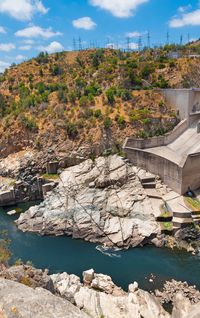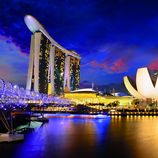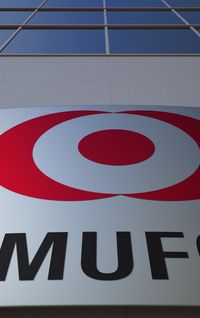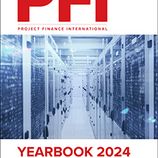Despite geopolitical turmoil, higher inflation, rising interest rates, and a supply chain squeeze combining to make developing offshore wind farms far more expensive to build and costlier to fund, Northland Power reached financial close on two massive projects in 2023. By Nick Herbert.
Offshore wind projects are very large-scale complex infrastructures that involve a huge amount of special technical equipment. It takes a great deal of experience, know-how and close relationships to complete solidly funded projects on time and in budget – particularly in new markets. Northland Power, the Toronto-headquartered developer and owner of clean and green power facilities, believes its disciplined approach to projects enables it to focus on select markets and create opportunities for realising upside for shareholders.
Increases in constructions costs and narrowing supply options have adversely affected offshore wind schemes globally – not least those for Northland Power. It made reaching financial close for its 1GW Hai Long scheme in Taiwan alongside Mitsui, and the 1.2GW Baltic Power offshore project in Poland with Orlen, a partially state-owned diversified Polish energy company, all the more impressive.
That’s particularly true of Baltic Power, where an extra €700m of debt had to be accommodated in early 2023 after launching the deal into the lending market.
“We saw costs moving up through the three different procurements that we did for offshore wind over the last year as options narrowed down for suppliers,” said Mike Crawley, Northland Power president and CEO, in an investor presentation. “And that's why in the Nordsee cluster it wasn't just rising costs that drove us to withdraw from that project. It was also what we saw in terms of the limited options for suppliers and what we saw as a lower quality supply chain versus what we had secured for Hai Long and Baltic and therefore a higher risk.”
Take your partners
Northland has found success in its two major projects by working with highly reputable partners possessing complementary skill sets. Indeed, it has worked with many of its contractors in the past, something that has been useful in helping it think through its construction plan and schedule for Taiwan – a new market for Northland. Partners with local knowledge and know-how are also essential in facilitating success.
Orlen, for example, was instrumental in bringing its local relationships to add value to the Baltic Power project. Orlen is providing the project’s route-to-market PPA, enabling a first-of-its-kind offtake in Poland. The project has obtained a 25-year route-to-market PPA three years ahead of COD. It provides a level of security needed to attract lenders.
“Having a route-to-market PPA before commercial operation date has really helped raise the financing,” a Northland Power spokesperson confirmed during the company’s investor call.
With the Hai Long JV, Japan’s Mitsui brings more than 100 years of experience doing business in Taiwan to the table. Its presence on the project also helped in mobilising the participation of Japanese lenders and export credit agencies. Gentari, the clean energy outfit of Petronas, the Malaysian oil and gas major, brings insight and experience gained by the parent company from its participation in offshore oil and gas projects throughout Asia.
Northland relies on its extensive in-house experience. Throughout the development of Hai Long, it has leveraged its global engineering, construction and project management team from Europe.
Costing the earth
Pulling together a team of bespoke and reliable contractors mitigates some of the unknowns of the construction phase. It is another element within the project that helps secure financing.
“Our funding structure through project finance requires us to use high-quality suppliers and contractors and not just opt to the lowest cost option,” according to Crawley.
For Hai Long, extra time was taken on the procurement programme to ensure the process was optimised. The procurement programme came in for heavy scrutiny by the lenders, which Northland believes has resulted in a robust schedule.
The project will be built over three construction seasons, and includes large winter buffers that can be used to help expedite construction. There are also multiple buffers built into the construction schedule to mitigate against construction delays.
“The multi-contract structure is, we believe, a benefit in Taiwan as it positions us closer to suppliers and allows for flexibility between local and international content suppliers,” said David Edward Povall, EVP of offshore wind at Northland Power.
Baltic Power has secured its construction contracts and built in ample buffers across all seasons.
Risk reduction
Huge offshore infrastructure projects, built to operate over long periods of time, are riddled with risk. With rising inflation, the higher cost of debt and supply chain issues, mitigating those risks as tightly as possible takes on added importance.
For the Baltic Power project, for example, Northland undertook a detailed unexploded ordnance (UXO) survey and extensive geotechnical studies on the ground conditions to mitigate any construction delays the team might face through the development stage.
The project team will build the interconnection facility and related infrastructure. And to address rising costs, Northland has locked down capex and offset inflation with an indexation mechanism in the CFD contract.
“All the costs and the scope are locked down in the supply contracts,” said Crawley. “That's both for our own risk management but also to reach the requirements of the project finance with the lenders and ECAs.”
The other requisite contingency is to absorb any claims resulting from one package being delayed and causing the subsequent contractor to be delayed in the start of their development.
“We put substantial buffers between each one of these packages, again as part of our own approach, but also because of the demands of lenders and technical advisers on projects,” said Crawley. “There's a lot of conservatism built into the schedules on both projects.”
Conservatism is built into forecasts of pre-completion revenues. There is about US$723m of pre-completion revenue being generated by Hai Long, based on a P90 forecast, where the size of the project and length of construction allows revenues to be generated in phases prior to commercial operations of the full project. There is also upside potential to these revenues as the project is completed on time or even earlier than scheduled.
Baltic Power has the ability to earn pre-completion revenues, but they are much smaller in size and sustained over a shorter period of time. As a result, the lenders did not give Northland credit for them in the project financing. It does, however, mean that there could be upside to returns, assuming the project is delivered on time.
Baltic Power benefits from a 25-year revenue contract for difference (CfD) that has strong support features, including inflation indexation with a base year of 2021 and a 100% peg to the euro (up from initial plans for a 75% peg), which has helped in offsetting increasing costs. The CfD revenue contract also carries regulatory protection, providing compensation for grid connection delays or grid unavailability.
To mitigate the risks from geopolitical tension in Taiwan, Northland purposely structured the Hai Long financing with ECAs from six different countries. And to hedge the multiple FX risk that exists due to construction contracts being made in euros and debt being denominated in multiple currencies, Northland embarked on an extensive hedging programme that commenced over the summer. That hedging process has been successful in locking down rates.
Closing Baltic
After a long haul, the multibillion-euro Baltic Power project financing finally closed as scheduled in Q3 and early construction work has commenced. The project is expected to achieve commercial operations in 2026, becoming the first operating offshore wind farm in Poland.
The construction plus 20-year €4.4bn green project financing includes €3.6bn of term loan facilities and €800m of ancillary facilities, bringing together tranches and efforts by 25 lenders in a club deal. Equity and standby equity for the project is about €945m all-in. The debt-to-equity split is 80/20. The overall financing cost in the deal is 5%.
The project has faced considerable price increases this year, which explains the nearly €700m of extra debt it needed to raise. Price increases were not the only challenge Northland had to overcome, as much of the project was novel with some features breaking new ground.
“Alongside cost increases, we were getting new lenders involved and inaugurating a new market,” Udo Schneider, managing director at Green Giraffe Advisory, told PFI. Green Giraffe was financial adviser to the Orlen-Northland Baltic Power JV alongside Pekao Investment Banking.
“A large lender group needed to get comfortable with several first-of-their-kind features, particularly those that were first-time offshore wind lenders,” keeping in mind that the debt was “structured aggressively with low margins and high gearing – but balanced with several risk mitigating features,” he commented.
Nearly all of the financing is in euros with a small amount in zloty to cover local costs. Given that the deal was initially due to be arranged as a zloty-denominated financing, Polish banks found themselves in need of euro liquidity to be able to back it.
“It was part of the financing strategy – whether in zloty or in euro – to accommodate Polish lenders in the deal to establish a local market presence in the transaction, even if all these lenders were financing offshore wind for the first time,” Schneider said.
Accommodating a large and diverse lenders group and committing all stakeholders to a short time-frame to closing for a project of this size with so many first-of-kind features in the Polish market has taken a great deal of detailed planning and hard work.
Closing Hai Long
Northland and Mitsui reached financial close on the huge NT$118bn (US$3.7bn) 20-year project financing loan for the Hai Long offshore wind project after almost a year of delays.
"This financing is Northland's first in Asia and, once closed, will be the largest non-recourse offshore wind project financing to-date in the region," said Northland CFO Pauline Alimchandani.
Draw-down has not been made. Instead, the two sponsors are completing the sale of part of Northland’s stake in the project to Gentari. The transaction sees Gentari holding a 29.4% indirect interest in the project, while Northland holds a 30.6% share and it will continue to lead construction and operation.
The loan financing is split into two borrowing entities: Hai Long 2 Offshore Wind Power, which has a 20-year PPA with Taipower; and Hai Long 3 Offshore Wind Power, which has a 30-year corporate power purchase agreement with an investment-grade counterparty.
The total project cost is about US$6.7bn, funded by the PF loan, the pre-completion revenues, and sponsor equity, giving it a 62:38 debt-to-equity ratio. There is also an uncovered euro tranche of €150m. The weighted-average all-in interest rate is about 5%.
To see the digital version of this report, please click here.
To purchase printed copies or a PDF of this report, please email leonie.welss@lseg.com














